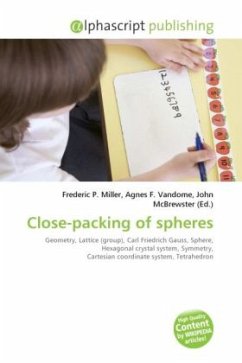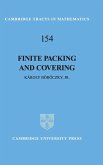In geometry, close-packing of spheres is the construction of an infinite regular arrangement of identical spheres so that they take up the greatest possible fraction of an infinite 3-dimensional space . Carl Friedrich Gauss proved that the highest average density that can be achieved by a regular lattice arrangement isThe Kepler conjecture states that this is the highest density that can be achieved by any arrangement of spheres, either regular or irregular.There are two simple regular lattices that achieve this highest average density. They are called face-centered cubic and hexagonal close-packed , based on their symmetry. Both are based upon sheets of spheres arranged at the vertices of a triangular tiling; they differ in how the sheets are stacked upon one another. In both arrangements each sphere has twelve neighbors. For every sphere there is one gap surrounded by six spheres and two smaller gaps surrounded by four spheres . The distances to the centers of these gaps from the centers of the surrounding spheres is for the tetrahedral, an for the octahedral, when the sphere radius is 1.








